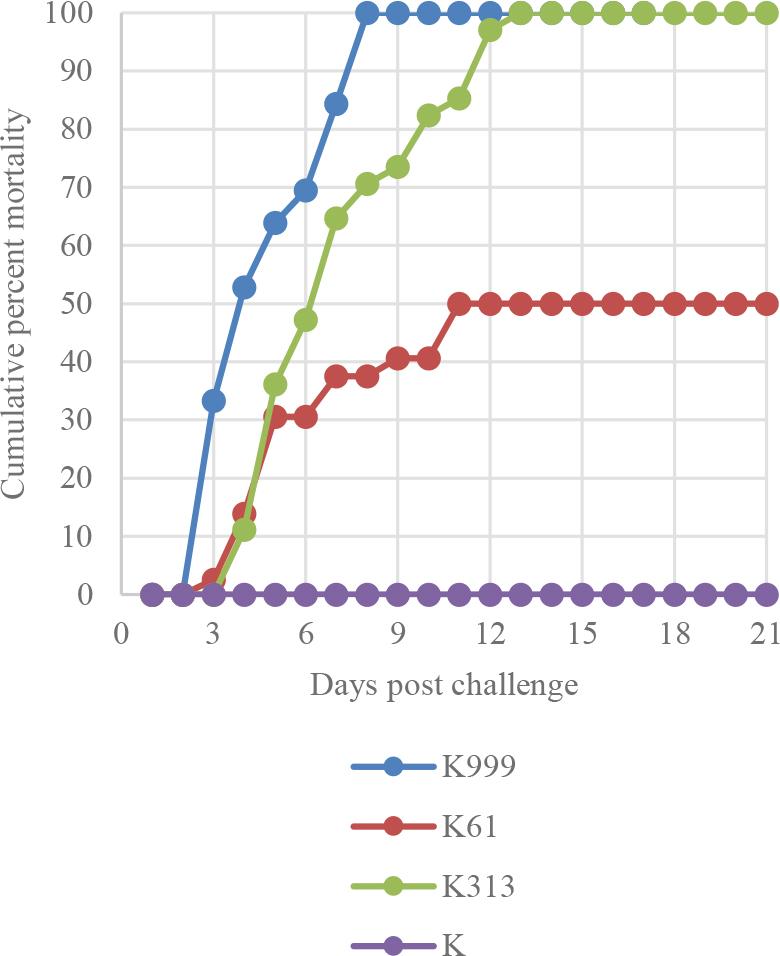Fig. 1.

Fig. 2.

Fig. 3.

Potential virulence genes of the Shewanella oncorhynchi strains
| Function | Gene | K61 | K313 | K999 |
|---|---|---|---|---|
| Flagella protein | flgI flmH fleN/flhG motA fliG fliM fliP flhA cheW cheY | + | + | + |
| cheV | + | |||
| lfgG | + | + | ||
| Type IV pilus protein | tapC tapT tufA mshG | + | + | + |
| tapB | + | |||
| Heat-shock protein | htpB | + | + | + |
| T2 secretion system | exeF | + | ||
| epsE epsG | + | + | + | |
| T3 secretion system | vscC2 vscN2 vscR2 vscS2 vscU2 | + | + | |
| Ferric-siderophore adenosine | bauB | + | ||
| 5′-triphosphate binding cassette transporter | bauD | + | + | + |
| Immune modulation | galE pseC rpoS lpxC kdsA | + | + | + |
| rfbC rffG | + | |||
| ugd pseI | + | |||
| wbtL ACICU cap8E | + | |||
| Regulation | rpe tufA csrA fur | + | + | + |
| Stress survival | katA clpP sodB | + | + | + |
| Biofilm | adeG algU luxS | + | + | + |
| Putative carbonic anhydrase | mig-5 | + |